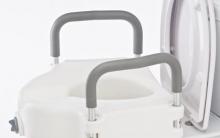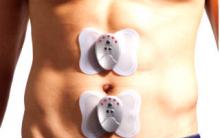Floating bodies- the state of equilibrium of a solid body partially or completely immersed in a liquid (or gas).
The main task of the theory of floating bodies is to determine the equilibrium of a body immersed in a liquid and to clarify the conditions for the stability of equilibrium. The simplest conditions for the floating of bodies are indicated by Archimedes' law. Let's consider these conditions.
As is known, all bodies immersed in a liquid are acted upon by the Archimedes force F A(pushing force) directed vertically upward, but not all of them float up. To understand why some bodies float and others sink, it is necessary to take into account another force acting on all bodies - gravity Ft which is directed vertically downwards, i.e. opposite F A. If a body is left inside a liquid at rest, it will begin to move in the direction in which the largest force is directed. The following cases are possible:
- if Archimedean force is less than gravity ( F A< F т ), then the body will sink to the bottom, i.e., drown (Fig. A);
- if the Archimedean force is greater than the force of gravity ( F A > F t), then the body will float up (Fig. b);
If this force turns out to be greater than the force of gravity acting on the body, then the body will fly up. Aeronautics is based on this.
Aircraft used in aeronautics are called balloons(from Greek aer- air, status- standing). Uncontrolled free-flight balloons with a shell shaped like a ball are called balloons. Not so long ago, huge balloons were used to study the upper layers of the atmosphere (stratosphere). stratospheric balloons. Controlled balloons (having an engine and propellers) are called airships.
The balloon not only rises up on its own, but can also lift some cargo: the cabin, people, instruments. In order to determine what kind of load an air container can lift, you need to know its lifting force. The lifting force of a balloon is equal to the difference between the Archimedean force and the force of gravity acting on the balloon:
F = F A - F t.
The lower the density of the gas filling a balloon of a given volume, the less the force of gravity acting on it and the greater the resulting lifting force. Balloons can be filled with helium, hydrogen or heated air. Although hydrogen has a lower density than helium, helium is still more often used for safety reasons (hydrogen is a flammable gas).
It is much easier to lift and lower a ball filled with hot air. To do this, place a burner under the hole located in the lower part of the ball. It allows you to regulate the air temperature, and therefore its density and lifting force.
You can select a ball temperature at which the weight of the ball and the cabin will be equal to the buoyancy force. Then the ball will hang in the air, and it will be easy to make observations from it.
Lesson developments (lesson notes)
Line UMK A.V. Peryshkin. Physics (7-9)
Attention! The site administration is not responsible for the content of methodological developments, as well as for the compliance of the development with the Federal State Educational Standard.
Lesson topic: Sailing conditions tel.
Lesson objectives:
- Educational: teach to analyze, highlight (main, essential),
- bring you closer to solving problem situations on your own.
- Developmental: develop interest in specific activities in the lesson,
- develop the ability to compare, classify, generalize facts and concepts.
- Educational: create an atmosphere of collective search, emotional elation, joy of learning, joy of overcoming difficulties.
Place of the lesson in the section:"Pressure of solids, liquids and gases", after studying the topic "Pressure of liquids and gases on a body immersed in them. Archimedean force."
Lesson type: Lesson on reviewing subject knowledge.
Basic terms and concepts: mass, volume, density of matter, body weight, gravity, Archimedean force.
Interdisciplinary connections: mathematics
Visibility: demonstration of the behavior of different bodies immersed in water; body floating conditions depending on density.
Equipment:
a) for demonstration
- a plastic jar with water, three objects on a string: an aluminum cylinder, a plastic ball, a hermetically sealed bottle of water (prepared in advance by the teacher), which can be in equilibrium anywhere in the liquid;
- a bath of water, a plate of aluminum foil, pliers.
b) for frontal work
- Scales with weights, measuring cylinder (beaker), float capsule with lid (3 each), dry sand, threads, filter paper, electrical tape, instructions for completing frontal experiment tasks, notebooks for laboratory work.
Forms of work in the lesson: frontal in pairs, individual.
Lesson Plan
- Organizing time;
- Initial check of understanding of previously studied material;
- Practical work to verify the findings;
- Reflection;
- Homework.
Progress of the lesson
I. Organizational moment
Today in the lesson we will continue to study the behavior of bodies immersed in water. Let's look at a few experiments; you will carry out some of the experiments yourself and perform some calculations.
II. Initial check of understanding of previously studied material
Experience 1
We lower an aluminum cylinder, a ball and a bottle of water into the water in succession. We observe the behavior of bodies.
Result: the cylinder sinks, the ball floats up, the bubble floats, completely immersed in water.
Problem situation: Why? – (Ratio of forces acting on the body).
– All bodies in water are acted upon by two forces: the force of gravity, directed downward, and the buoyant force (Archimedes’ force), directed upward.
– From the rule of addition of forces acting on a body along one straight line, it follows: sinks if F t ˃ F A; floats up if F t ˂ F A; floats if F t = F A.
III. Practical work to verify the findings
Let's do an experiment and check the relationship between gravity and buoyant force. (The laboratory work “Elucidation of the conditions for floating bodies in a liquid” is taken as a basis - page 211 of the textbook).

Exercise 1.
- Fill the capsule 1/4 full with sand, determine its mass in grams on the scale. Convert the mass value into kg and write it in the table.
- Place the capsule in water and determine the volume of displaced water in cm3. To do this, mark the water levels in the beaker before and after immersing the capsule in water. Record the volume value in m3 in the table.
P = F heavy = mg And F A = ρ f gV t
Task 2.
- Fill the capsule completely with sand and determine its mass in grams on the scale. Convert the mass value into kg and write it in the table.
- Place the capsule in water and determine the volume of displaced water in cm3. To do this, mark the water levels in the beaker before and after immersing the capsule in water. Write the volume value in m 3 in the table.
- Calculate gravity and Archimedean force using the formulas:
P = F heavy = mg And F A = ρ f gV
Compare Archimedean force with gravity. Enter the calculation results in the table and note: the capsule sinks or floats.
|
Body mass, |
Gravity, |
Volume of displaced water, |
Archimedes' power |
Comparison F cord and F A |
Behavior of the capsule in water |
|
|
pops up |
||||||
Task 3.
- Determine at what ratio of gravity and Archimedean force the capsule will float anywhere in the liquid, completely immersed in it? What value will the volume of water displaced by the capsule have?
- Determine the mass for the floating body (without calculation).
- Fill the capsule with sand to the required mass, then lower it into water and experience the correctness of your reasoning.
- Draw a conclusion about the condition for a body to float in a liquid.
Experience 2
Let's check the floating conditions depending on the density of the substance from which the bodies are made and the density of the liquid. For this we have a bath of water, a plate of aluminum foil, and pliers.
- By bending the corners, we will make a box from the plate. Let's lower it to the surface of the water. We observe the box floating on the surface of the water.
- Let's take the box out of the water and return the plate to its flat appearance. fold the plate in half, in four, etc. Using pliers, squeeze the foil and lower it into the water.

Result: the box-shaped plate floats, but when compressed it sinks.
Problem situation: Why? – (Ratio of body and water densities).
- density boxes made of aluminum foil is less dense than water, and the density of a compressed lump of foil is greater than the density of water.
- Conditions for floating bodies: sinks if ρ t ˃ ρ water; floats up if ρ t ˂ ρ water; floats if ρ t = ρ water. (ρ aluminum = 2700 kg/m3; ρ water = 1000 kg/m3).
IV. Reflection
Experience 3. Look and explain the operation of the device made by the student according to the assignment for §52 (p. 55 of the textbook). "Cartesian Diver". Instead of a clear bottle, the student used a regular pipette.

The device allows you to demonstrate the laws of floating of bodies.
V. Homework
§52; exercise 27(3,5,6).
Self-analysis of the lesson
The topic of the physics lesson in grade 7 is “Conditions for floating bodies.” There are 20 students in the class. The majority of them have good mathematical training. The guys are inquisitive and active. They work well in a team. Participate in preparing equipment for the lesson.
The purpose of the lesson: to interest students, to bring them closer to independently solving problem situations. During the lesson, children learn to independently plan ways to achieve goals, including alternative ones, and consciously choose the most effective ways to solve a problem.
The type of lesson - a lesson on repeating subject knowledge - allows you to test the knowledge acquired in the previous lesson and prepare for solving problems on the topic in the next lesson.
The selected stages of the lesson are logically connected with each other, there is a smooth transition from one to another. During the lesson, the teacher only guides and corrects the actions of the students, who work independently for almost the entire lesson. To save time when completing the practical part, during additional classes, students prepared two capsules with sand, fully and partially filled (tasks 1 and 2), the third remained empty. During the lesson, the children learned to draw conclusions from the experiment and actively discussed solutions to problem situations. At the final stage, the children’s attention was once again focused on the topic of the lesson. The teacher commented on the homework and gave grades for oral answers; after the lesson, the notebooks for laboratory work were checked.
I believe that the goals of the lesson were achieved: the children learned to analyze, highlight (the main, essential), compare, classify, generalize facts and concepts, and find solutions to problem situations. The lesson created an atmosphere of collective search, emotional elation, the joy of learning, and the joy of overcoming difficulties.
Sailing conditions
Purpose of the lesson: to clarify the conditions for the floating of bodies depending on the density of matter and liquid.
Educational:
familiarization of students with concepts: the condition of floating bodies
formation of a holistic perception of the scientific picture of the world
Educational:
development of students' operational thinking style;
development of students’ synthetic thinking;
development of skills and abilities to conduct experiments;
continuation of work on the development of intellectual skills: highlighting the main thing, analysis, ability to draw conclusions, specification;
Educators:
developing students' interest in studying physics;
nurturing accuracy, ability and skill in rational use of one’s time, planning one’s activities.
Equipment for the lesson:
Test tube with stopper, potato ball, plasticine, water, saturated salt solution, vessel, dynamometer, scales with weights
1. Introduction. Updating knowledge.
Today a student in your class will start the lesson. So let's listen carefully
The blue whale's tongue weighs 3 tons, its liver weighs 1 ton, its heart weighs 600-700 kg, its blood weighs 10 tons, the diameter of its dorsal artery is 40 cm, and its stomach contains 1-2 tons of food; the mouth of a whale - a room with an area of 24 m2. IN thrown ashore, dies almost instantly.
An interesting plant lives in the Pacific Ocean - this is macrocystis. Its length reaches 57 meters and its weight is 100 kilograms. This algae is called bladderwrack. Near each leaf blade there is a bubble the size of a large apple. The shell is thick, you won’t puncture it! It is inflated tightly, tightly with some kind of gas that the algae itself produces. This plant is very useful.
L hogs and ducks, heavy and clumsy on the shore, But so light and graceful in the water.
G a ship made of iron sinks, but a ship made of iron floats
2. Formulate the topic of the lesson???
Sailing conditions
Lesson objectives:
Learn to derive formulas for the floating conditions of bodies.
Learn to work with instruments, observe, analyze and compare experimental results, and draw conclusions.
Find out the condition under which a body sinks in a liquid, and the condition for the floating of bodies completely immersed in a liquid.
3.Experience:
– I have in my hands several blocks and balls of the same volume. Will the buoyancy forces of these bodies be the same when immersed in water? (same)
- Let's try to put them in the water. What do we see? Some bodies drowned, others float. Why? What else did we not take into account when we talked about immersing bodies in liquid?
Conclusion from experience:
This means whether a body sinks or not depends not only on the force of Archimedes, but also on the force of gravity.
4. Let's repeat the material from the previous lesson
What force is called Archimedean force?
On what quantities does it depend?
What formula is used to calculate it?
How else can you determine buoyancy force?
In what units is it measured?
How is the Archimedean force directed?
How to determine gravity
What is the direction of gravity?
What is the resultant force?
How is the resultant of two forces directed along one straight line in one direction found? In different directions?
How will a body behave under the influence of two equal but oppositely directed forces?
5. Presentation of new material. Primary consolidation.
Let's look at different situations
(Ft >FA) (Ft =FA) (Ft< FА)
Let's make assumptions (hypothesis)
if the force of gravity is greater than the force of Archimedes (Ft > FA) -- The body sinks
if the force of gravity is equal to the force of Archimedes (Ft = FA) – The body floats,
if the force of gravity is less than the force of Archimedes (Ft< FА) ---Тело всплывает
The assumption must be tested experimentally.
Before you are various bodies and devices.
What materials should be used to prove our assumptions?
(dynamometer, liquid, body)
What measurements to make (determine the Archimedes force and the force of gravity and compare them with each other) or calculate using formulas.
Fill out the table
A= ρ andV g =F t = mg =
conclusion (the ratio of gravity and Archimedean force determines the ability of the body: to swim, sink or float)
The ratio of gravity and Archimedean force determines the body’s ability to swim, sink or float.
Demonstrations: 1. A test tube body floats in water. 2. A potato ball sinks in water. 3. The same potato ball floats in salt water. 4. A plasticine ball sinks in water 5. A plasticine boat floats in water
In order for a body to float, it is necessary that the force of gravity acting on it be balanced by the Archimedean (buoyant) force.
F t = F a (1)
Archimedean force: F a = ρ f V f g (2)
Gravity: F t = mg = ρVg (3)
Let's substitute expressions (2) and (3) into equality (1): ρVg = ρ f V f g
Dividing both sides of this equality by g, we obtain the condition for the floating of bodies in a new form:
ρV = ρ f V f
In order for a body to float, partially protruding above the surface of the liquid, the density of the body must be less than the density of the liquid. When the density of the body is greater than the density of the liquid, the body sinks, because the force of gravity exceeds the Archimedean force.
Analysis of the exercise:
– What substances (ice, stearin, wax, rubber, brick) will float in water, milk, mercury?
– Using the table, determine which metals sink in mercury? (osmium, iridium, platinum, gold)
– What substances will float in kerosene? (cork, pine, oak)
4. Application of floating conditions for bodies
A) Sailing ships
- And now we must explain why a steel nail sinks, but a ship made of steel floats?
- Let's take plasticine. If you put it in water, it drowns. How to make sure he doesn't drown?
B) Swimming of fish and whales
How can fish and whales change their diving depth? (fish due to a change in the volume of the swim bladder, whales due to a change in the volume of the lungs, which means due to the force of Archimedes)
The density of living organisms inhabiting the aquatic environment differs very little from the density of water, so their weight is almost completely balanced by the Archimedean force. The fish can change the volume of its body by compressing the swim bladder with the efforts of the pectoral and abdominal muscles, thereby changing the average density of its body, thanks to which it can regulate the depth of its dive.
The swim bladder of a fish easily changes its volume. When a fish, with the help of muscles, descends to a greater depth and the water pressure on it increases, the bubble contracts, the volume of the fish’s body decreases and it swims in the depths. When rising, the swim bladder and volume of the fish increases and it floats to the surface. This is how the fish regulates the depth of its dive. Swim bladder of a fish This is interesting
Whales regulate their dive depth by increasing and decreasing their lung capacity. This is interesting
The average density of living organisms inhabiting the aquatic environment differs little from the density of water, so their weight is almost completely balanced by the Archimedean force. Thanks to this, aquatic animals do not need strong and massive skeletons. For the same reason, the trunks of aquatic plants are elastic.
Birds have a thick, water-impervious layer of feathers and down, which contains a significant amount of air, due to which the average density of their body is very low, so ducks do not submerge much in the water when swimming.
B) Submarine navigation
– How can submarines rise and fall to different depths? (due to changes in its mass, and therefore gravity)
D) Human swimming in fresh water and salt water
The average density of the human body is 1030 kg/m. Will a person swim or drown in the river and in the salt lake?
Floating bodies
203. A swimmer lying motionless on his back on the water takes a deep breath and exhales. How does the position of the swimmer’s body change in relation to the surface of the water? Why?
204. Are the buoyancy forces acting on the same wooden block floating first in water and then in kerosene the same?
205. Why does a plate placed flat on the surface of the water float, but one placed edge-on into the water sinks?
206. Can a lifebuoy hold any number of people who grab onto it?
207. Heavy lead plates are placed on the chest and back of the diver, and lead soles are attached to the shoes. Why do they do this?
208. A piece of wood is lowered into a vessel with water. Will this change the pressure at the bottom of the vessel if water does not pour out of the vessel?
209. A glass is filled to the brim with water. A piece of wood is placed in it so that it floats freely. Will the weight of the glass change if water still fills it to the brim?
Answers:203. When inhaling, the swimmer floats up, and when exhaling, he plunges deeper into the water, since when breathing, the volume of the chest changes and the Archimedean force changes accordingly.
(When inhaling, the swimmer floats up, when exhaling, he plunges deeper into the water, since during breathing the volume of the chest changes, but the body weight remains almost constant. Therefore, the total volume of the body increases when inhaling, decreases when exhaling, and the volume of the part of the body immersed in water does not change.)
204. Same. The block floats in both fluids, which means that the buoyant force in each of them is equal to the force of gravity acting on it.
206. No, since the lifting force (the difference between the maximum Archimedean force and the force of gravity) of a circle has a limited value.
207. To increase the force of gravity and make it greater than the Archimedean force, otherwise the diver will not dive to the required depth.
208. The pressure will increase as the water level in the vessel rises.
209. It will not change, since the weight of a piece of wood is equal to the weight of the water displaced by it (and poured out of the glass).
6. Experimental task.
Determine body weight:m=
DefineFt according to the formula and using a dynamometer, fill out the table.
Define FAUsing the formula and using a dynamometer, fill out the table.
Formulate a conclusion (the ratio of gravity and Archimedean force determines the ability of the body: to swim, sink or float)
Fill out the table
A= ρ andV g =F t = mg =
conclusion(based on experiment)
conclusion (in fact)
F t =
7. Homework:
8.Conclusion: with Now our lesson time is coming to an end. And although we have not solved all the problems, our journey along the roads of physics does not end!
Floating is the ability of the body to stay on the surface of a liquid or at a certain level inside a liquid.
We know that any body in a liquid is acted upon by two forces directed in opposite directions: gravity and Archimedean force.
The force of gravity is equal to the weight of the body and is directed downward, while the Archimedean force depends on the density of the liquid and is directed upward. How does physics explain the floating of bodies, and what are the conditions for floating bodies on the surface and in the water column?
Archimedean force is expressed by the formula:
Fout = g*m f = g* ρ f * V f = P f,
where m is the mass of the liquid,
and Pf is the weight of the fluid displaced by the body.
And since our mass is equal to: m f = ρ f * V f, then from the formula of the Archimedean force we see that it does not depend on the density of the immersed body, but only on the volume and density of the fluid displaced by the body.
Archimedean force is a vector quantity. The reason for the existence of the buoyant force is the difference in pressure on the upper and lower parts of the body. The pressure indicated in the figure is P 2 > P 1 due to the greater depth. For the Archimedes force to arise, it is enough that the body is at least partially immersed in the liquid.
So, if a body floats on the surface of a liquid, then the buoyant force acting on the part of this body immersed in the liquid is equal to the gravitational force of the entire body. (Fa = P)
If the force of gravity is less than the Archimedean force (Fa > P), then the body will rise from the liquid, that is, float.
In the case when the weight of the body is greater than the Archimedean force pushing it out (Fa
From the obtained ratio, important conclusions can be drawn:
The buoyancy force depends on the density of the liquid. Whether a body sinks or floats in a liquid depends on the density of the body.
A body floats when completely immersed in a liquid if the density of the body is equal to the density of the liquid
A body floats, partially protruding above the surface of the liquid, if the density of the body is less than the density of the liquid
- if the density of the body is greater than the density of the liquid, swimming is impossible.
Fishermen's boats are made of dry wood, the density of which is less than that of water.
 Why do ships float?
Why do ships float?
The hull of a ship that is immersed in water is made voluminous, and inside this ship has large cavities filled with air, which greatly reduce the overall density of the ship. The volume of water displaced by the ship is thus greatly increased, increasing its buoyant force, and the total density of the ship is made less than the density of water, so that the ship can float on the surface. Therefore, each ship has a certain limit on the mass of cargo that it can carry. This is called the ship's displacement.
A body immersed in a liquid, in addition to gravity, is subject to a buoyant force - the Archimedes force. The liquid presses on all sides of the body, but the pressure is not the same. After all, the lower edge of the body is immersed in liquid more than the upper, and the pressure increases with depth. That is, the force acting on the lower face of the body will be greater than the force acting on the upper face. Therefore, a force arises that tries to push the body out of the liquid.
The value of the Archimedean force depends on the density of the liquid and the volume of that part of the body that is located directly in the liquid. Archimedes' force operates not only in liquids, but also in gases.
Archimedes' Law: a body immersed in a liquid or gas is subject to a buoyant force equal to the weight of the liquid or gas in the volume of the body. In order to calculate the Archimedes force, it is necessary to multiply the density of the liquid, the volume of the part of the body immersed in the liquid, and the constant value g.
A body that is inside a liquid is acted upon by two forces: gravity and the Archimedes force. Under the influence of these forces the body can move. There are three conditions for floating bodies:
If the force of gravity is greater than the Archimedean force, the body will sink and sink to the bottom.
If the force of gravity is equal to the force of Archimedes, then the body can be in equilibrium at any point in the liquid; the body floats inside the liquid.
If the force of gravity is less than the Archimedean force, the body will float and rise upward.
Floating of bodies on the surface of a liquid
In a surface position, two forces act on a floating body along the OZ axis (Fig. 1.1). This is the force of gravity of the body G and buoyant Archimedean force P z .
swimming, i.e. submerged  . The basic concepts of swimming theory include the following:
. The basic concepts of swimming theory include the following:
- swimming plane(I-I) - the plane of the free surface of the liquid intersecting the body;
- waterline – the line of intersection of the body surface and the swimming plane;
- draft (y)– depth of immersion of the lowest point of the body. The maximum permissible draft of the vessel is marked on it with a red waterline;
- displacement – the weight of water displaced by a vessel. The vessel's displacement at full load is its main technical characteristic;
The center of displacement (point D, Fig. 1.1) is the center of gravity of the displacement through which the line of action of the buoyant Archimedean force passes;
The axis of swimming (О О ") is a line passing through the center of gravity C and the center of displacement D when the body is in balance.
To maintain equilibrium, the melting axis must be vertical. If an external force, for example the force of wind pressure, acts on a floating vessel in the transverse direction, then the vessel will tilt, the axis of navigation will rotate relative to point C and a torque Mk will arise, rotating the vessel relative to the longitudinal axis counterclockwise (Fig. 1.2)
The stability of a floating body depends on the relative position of points C and D. If the center of gravity C is below the center of displacement D, then during surface navigation the body is always stable, since the torque Mk arising during a roll is always directed in the direction opposite to the roll.

If point C is located above point D (Fig. 1.3), then the floating body can be stable or unstable. Let's consider these cases in more detail.
When heeling, the center of displacement D shifts horizontally towards the heel, since one side of the vessel displaces a larger volume of water than the other.
Then the line of action of the buoyant Archimedean force P z will pass through the new center of displacement D" and intersect with the axis of navigation OO" at point M, called metacenter. To formulate the stability condition, we denote the segment
M D 1 = b,аСD 1 =∆ , Where b - metacentric radius; ∆-eccentricity.
Stability condition: a body is stable if its metacentric radius is greater than its eccentricity, i.e. b > ∆.
A graphical interpretation of the stability condition is presented in Fig. 1.3, from which it is clear that in case a) b > ∆ and the resulting torque is directed in the direction opposite to the roll, and in case b) we have: b< ∆ and moment M k rotates the body in the direction of roll, i.e. the body is not stable.
Displacement ship (vessel) - the amount of water displaced by the underwater part of the ship (vessel) hull. The weight of this amount of liquid is equal to the weight of the entire ship, regardless of its size, material and shape.
Distinguish volumetric And massive standard, normal, complete, greatest, empty displacement.
Volumetric displacement Waterline(Dutch water line) - the line of contact between the calm water surface and the hull of a floating vessel. Also, in the theory of a ship, there is an element of a theoretical drawing: a section of the hull by a horizontal plane.
Mass displacement
Standard displacement
Normal displacement
Total displacement
Maximum displacement
Lightweight displacement
Submerged displacement
Surface displacement
Stability of floating bodies
Stability floating bodies is their ability to return to their original position after they have been removed from this position due to the influence of any external forces.
To impart stability to a floating body, it is necessary that when it deviates from an equilibrium position, a pair of forces is created, which will return the body to its original position. Such a pair of forces can only be created by forces G And P n. Three different options for the relative arrangement of these forces are possible (Fig. 5.3).

Rice. 5.3. Stability of semi-submerged bodies at the relative positions of the center of gravity and the center of displacement A And b– stable balance
The center of mass is located below the center of displacement.When heeling, the center of displacement moves both due to a change in the position of the body and due to a change in the shape of the displaced volume. In this case, a pair of forces arises that strive to return the body to its original position. Consequently, the body has positive stability.
The center of mass coincides with the center of displacement– the body will also have positive stability due to a displacement of the center of displacement due to a change in the shape of the displaced volume.
The center of mass is above the center of displacement There are two main options here (Fig. 5.4):
1) the point of intersection of the lifting force with the axis of swimming M (metacenter) lies below the center of mass - the equilibrium will be unstable (Fig. 5.4, A);
2) the metacenter lies above the center of mass - the equilibrium will be stable (Fig. 5.4, b). The distance from the metacenter to the center of mass is called metacentric height. Metacenter – the point where lift intersects the floating axis. If the point M lies above the point WITH, then the metacentric height is considered positive if it lies below the point WITH– then it is considered negative.
Thus, the following conclusions can be drawn:
the stability of a body in a semi-submerged state depends on the relative location of the points M And WITH(from metacentric height);
the body will be stable if the metacentric height is positive, i.e. The metacenter is located above the center of gravity. Almost all military amphibious vehicles are built with a metacentric height of 0.3-1.5 m.

Rice. 5.4. Stability of semi-submerged bodies with relative positions of the center of gravity and metacenter:
A– unstable equilibrium; b– stable balance
Displacement ship (vessel) - the amount of water displaced by the underwater part of the ship (vessel) hull. The mass of this amount of liquid is equal to the mass of the entire ship, regardless of its size, material and shape.
Distinguish volumetric And massive displacement. According to the load state of the ship, they distinguish standard, normal, complete, greatest, empty displacement.
For submarines there are underwater displacement and surface displacement.
Volumetric displacement
displacement equal to the volume of the underwater part of the ship (vessel) to the waterline.
Mass displacement
displacement equal to the mass of the ship (vessel).
Standard displacement
the displacement of a fully equipped ship (vessel) with a crew, but without reserves of fuel, lubricants and drinking water in tanks.
Normal displacement
displacement equal to standard displacement plus half the supply of fuel, lubricants and drinking water in tanks.
Total displacement
displacement equal to standard displacement plus full reserves of fuel, lubricants, drinking water in tanks, and cargo.
Maximum displacement
displacement equal to standard displacement plus maximum reserves of fuel, lubricants, drinking water in tanks, cargo.
Lightweight displacement)
displacement of an empty ship (vessel), that is, a ship (vessel) without crew, fuel, supplies, etc.
Submerged displacement
displacement of a submarine (bayscaphe) and other underwater vessels in a submerged position. Exceeds the surface displacement by the mass of water received when immersed in the main ballast tanks.
Surface displacement
displacement of a submarine (bathyscaphe) and other underwater vessels in a position on the surface of the water before diving or after surfacing.











What is aponeurosis and in what cases does this pathology need special attention?
Yuri Borzakovsky. Sports biography. Interview with Yuri Borzakovsky: amateur and professional running Athletics Borzakovsky short biography
Alexander Erokhin: career and achievements
Third trimester: gymnastics for mothers
Drying the body for girls at home Basic principles of drying